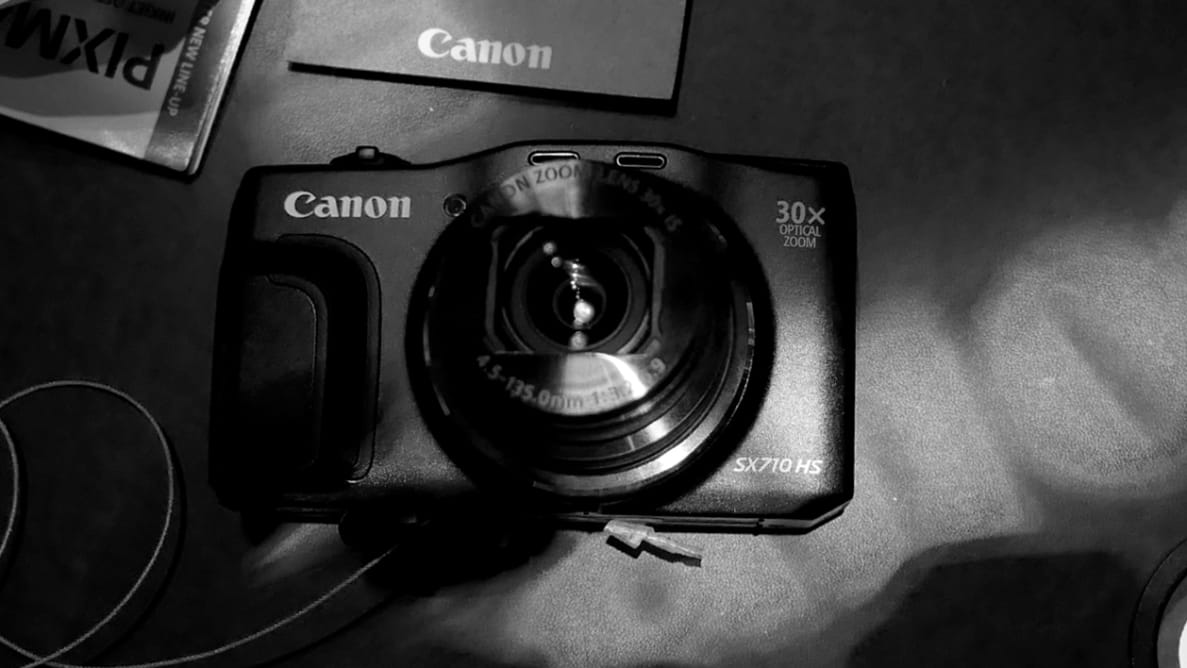Ronald Reagan (kind of) said that about redwood trees once upon a time, but he might as well have been talking about Canon's lineup of PowerShot cameras. Few companies can rival Canon's track record when it comes to continuous, relentless, and often unremarkable iteration over the years.
The new Canon PowerShot SX710 (MSRP $349.99) is a sterling example, taking last year's largely successful PowerShot SX700 HS and making only minor tweaks. The high points are all the same: onboard WiFi, a 30x optical zoom, a pocket-friendly form factor, and Canon's characteristic ease of use. The major change? More megapixels, bumping resolution from 16 to 20MP.
Should you toss your SX700 in the trash and pick up a shiny new SX710? Probably not. But let's take a deeper look at this new travel-zoom just to be sure.
Design & Usability
Compact, with loads of room to zoom
Canon didn't invent travel-zoom cameras (pocketable models with huge optical zoom ratios), but it certainly makes some of the most popular ones. Since 2007's PowerShot SX100 IS and its 10x optical zoom arrived on the scene, Canon has been churning out updates on a yearly basis.
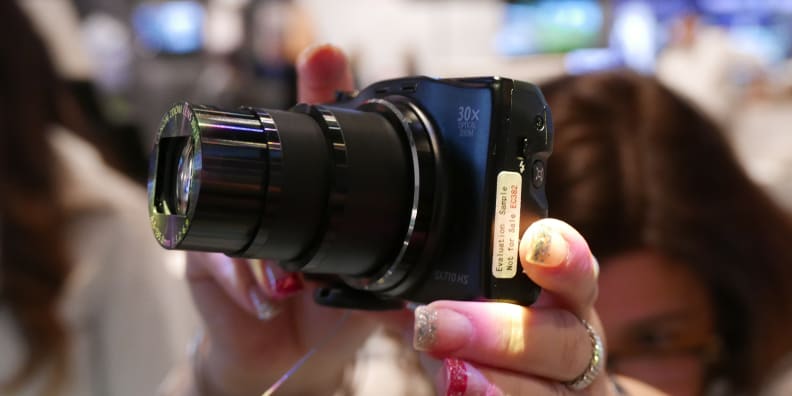
The SX710 HS handles quite well for a camera of its size, with a well-shaped grip.
The SX700 HS was last year's entrant, offering a now-typical 30x zoom. The SX710 doesn't go any further optically, retaining the same lens along with the same processor, flash, and rear LCD. The 20.3-megapixel image sensor is new, however, with an ISO range of 80-3200—up from the SX700's 16.1-megapixel chip. The body design is practically identical in both size and weight, however—millimeter for millimeter and gram for gram.
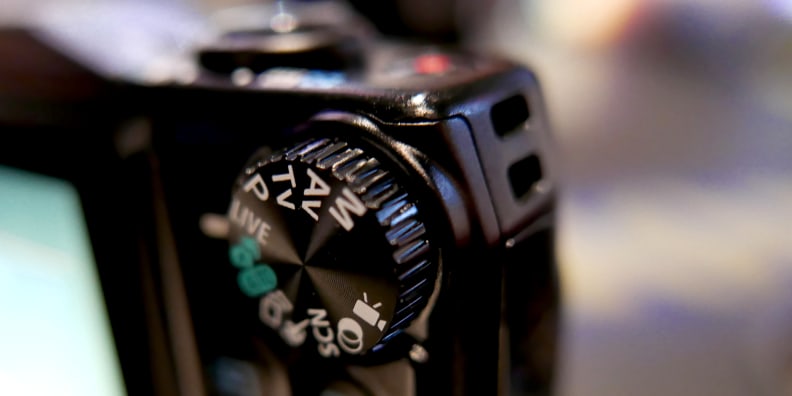
The body of the SX710 hasn't changed since last year, with the same physical mode dial on the back.
If you're familiar with the SX700 HS (or its step-down model, the SX600 HS) you can expect the same kind of design. If you're not, then suffice it to say that it's much like any other point-and-shoot you might have used in recent years. It has a collapsible zoom lens that telescopes out from the body, a shutter button surrounded by a zoom toggle, and a rear LCD. There's no viewfinder, but you get a smattering of physical controls and a mode dial with manual, auto, and creative settings.
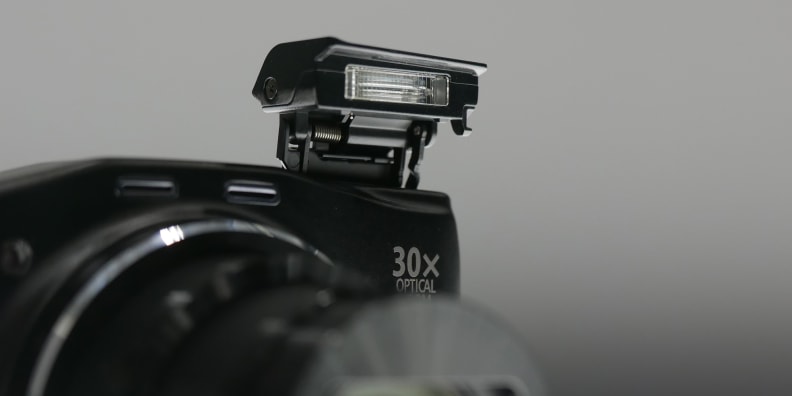
The Canon SX710 HS includes a built-in flash, but no hotshoe.
In use, the SX710 powers on and off quickly, takes photos without much fuss, and zooms quickly to its destination. If you haven't bought a point-and-shoot for a few years, the SX710 may surprise you with how quick it feels. That principle extends to capture speed; this camera can rattle off a respectable 8.5 frames per second in its dedicated burst mode (and around 3 fps otherwise).
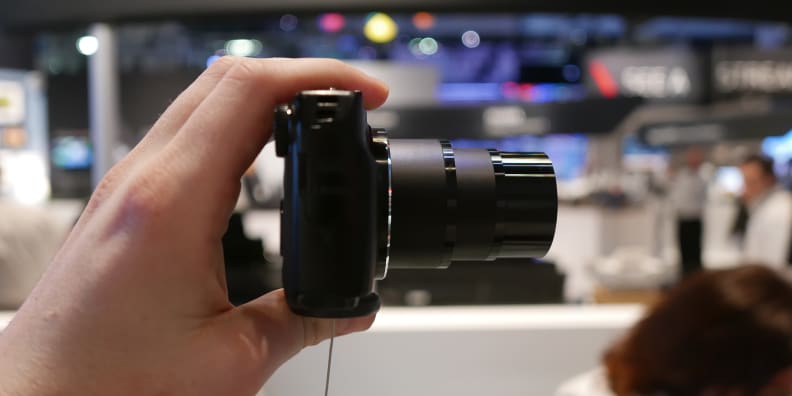
The 30x lens telescopes far out from the body, giving you more room to stabilize the camera.
The one area where the SX700 HS struggles a bit is with focus speed, especially in dim light at full telephoto. That's an issue it shares with its predecessor—unsurprising, since they share so many components. Otherwise, it's a standard point-and-shoot: light enough to be carried anywhere, small enough to fit in a jacket pocket, and with a very generous zoom range that can easily capture subjects even 100 feet away.
Features
NFC makes WiFi more palatable, though not as simple as we'd like.
Point-and-shoots have been viciously usurped by smartphone cameras; most people are willing to trade optical zoom and a modicum of image quality for improved portability and convenience. Camera manufacturers have been trying to claw back some of this lost ground by integrating wireless connectivity, but there's a stumbling block: entering SSIDs and WiFi passwords with camera control pads is no fun at all.
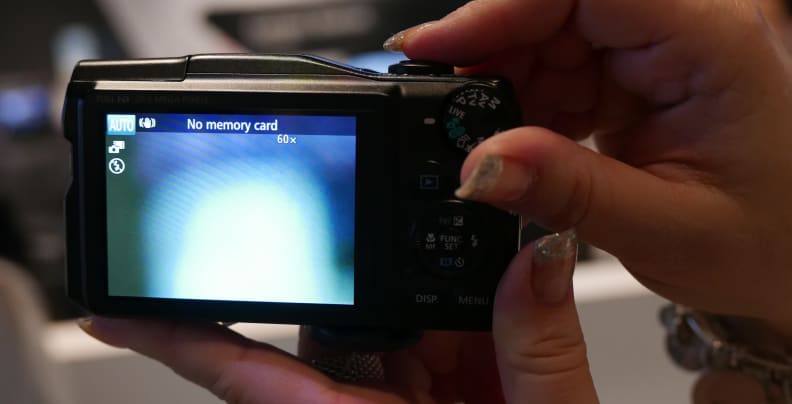
The rear LCD isn't large, but its 920k dot resolution is sufficient enough for checking photos.
To tackle this issue, most of Canon's new point-and-shoots include NFC. This allows simple, one-touch pairing with devices like your phone, printer, or even Canon's new Connect Station CS100. Though we weren't able to try it out ourselves during our hands-on time at CES 2015, the SX700 had this same feature so we're confident it'll work just fine.
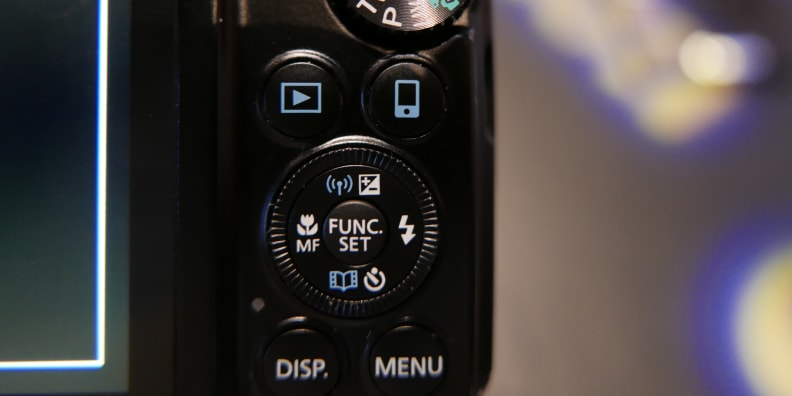
The rear controls of the SX710 HS are similar to all other Canon point-and-shoots, with a click wheel and a WiFi button.
What we're still not yet sure of is how useful this will be in real-world situations. Canon's Image Gateway has always sounded great on paper, but backing up tons of photos can usually be done easier and more quickly using good ol' SD cards. WiFi is useful for those times when you just want to move a single shot to your phone, but it doesn't replicate the convenience of a do-it-all smartphone.
The SX700's manual modes (shutter priority, manual, and program) return in the SX710, as do a number of scene modes, auto modes, and creative shot features. We're also glad to see Canon's Zoom Framing Assist feature return, which lets you tap a button to quickly zoom out and back in to relocate a subject that's left the frame.
Those, along with Canon's reliable optical image stabilization, are the most useful features in terms of day-to-day shooting, making a 30x optical zoom lens far more usable than you'd expect.
Conclusion
A minor update to a solid point-and-shoot
At CES 2015 there were plenty of game-changing products on display. But for every quantum dot TV or self-driving car there are a dozen minor updates to existing models. The SX710 HS falls firmly in the latter category, taking the PowerShot SX700 HS, swapping in a new image sensor, and pretty much calling it a day.
There's nothing wrong with that. While point-and-shoots are indeed under threat, travel zooms still do something smartphones definitely can't—namely, offer a ton of optical zoom—and most don't break the bank. The SX700 HS was already an excellent travel zoom in a crowded market, so Canon is smart to stick with what works.
While we must reserve final judgement until we get the SX710 HS into our labs and see how the new 20.3-megapixel image sensor performs in our battery of tests, it's unlikely to be much different from the SX700's 16.1-megapixel chip, which we tested a few months ago. If those results hold up, the SX710 HS will be a competitive model well worth its asking price—assuming you can't find last year's model for less.
Meet the tester
TJ is the former Director of Content Development at Reviewed. He is a Massachusetts native and has covered electronics, cameras, TVs, smartphones, parenting, and more for Reviewed. He is from the self-styled "Cranberry Capitol of the World," which is, in fact, a real thing.
Checking our work.
Our team is here to help you buy the best stuff and love what you own. Our writers, editors, and experts obsess over the products we cover to make sure you're confident and satisfied. Have a different opinion about something we recommend? Email us and we'll compare notes.
Shoot us an email